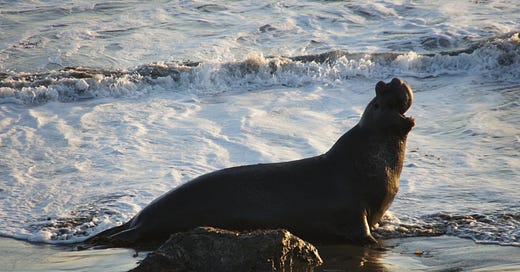
Elephant Seals on Piedras Blancas Beach
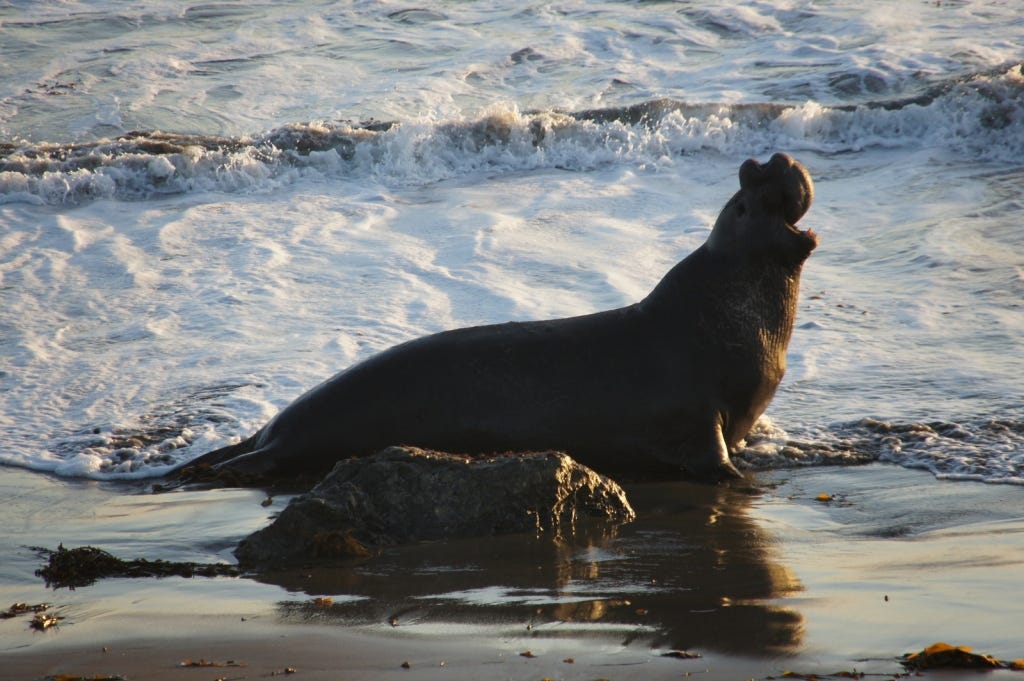
You hear them first. Barking, roaring, a loud squawk from a newborn over the sound of Pacific Ocean waves hitting the beach. Then you see the big lumps of flesh scattered in piles on the beach, the California coast stretching out in the distance. Hunted to near- extinction at the end of the 19th century (like just about everything), January is the season for elephant seals to give birth, and they gather by the thousands on the beaches just south of Big Sur to do so.
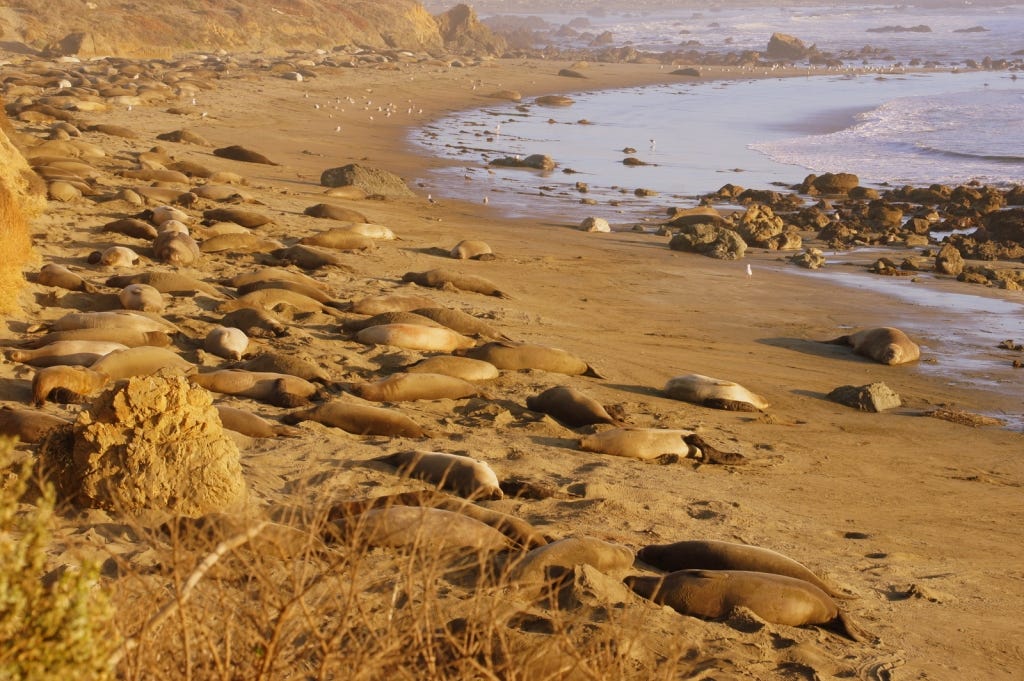
Seals hanging out at Piedras Blancas Beach.
Let’s talk numbers. The northern elephant seal bull grows up to 16 feet in length (picture a big Ford truck) and weighs in at 6,600 pounds, or 3.25 tons – close to what our van weighs! You can’t share a queen size bed with that behemoth.
The females are a bit smaller at 12 feet and 4,000 pounds, still not something I want rolling over me when I’m tanning on the beach. And while they can actually move pretty fast on land, in the water is where they thrive. They can dive! All the way down to 5,800 feet deep and for three hours, though usually around 1,000-3,000 feet and 30 minutes in duration.
Their eyes are 10 times more sensitive than ours, which allows them to see food, especially phosphorescent varieties, in low light conditions far below where most harbor seals and otters can reach. The proboscis noses, which look like short elephant trunks and inspired their name, also have a network of cavities designed to reabsorb and conserve moisture during their long time on the beach without going back into the water. (I picture the water recycling Stillsuits of the desert-living Fremen from the book Dune.)
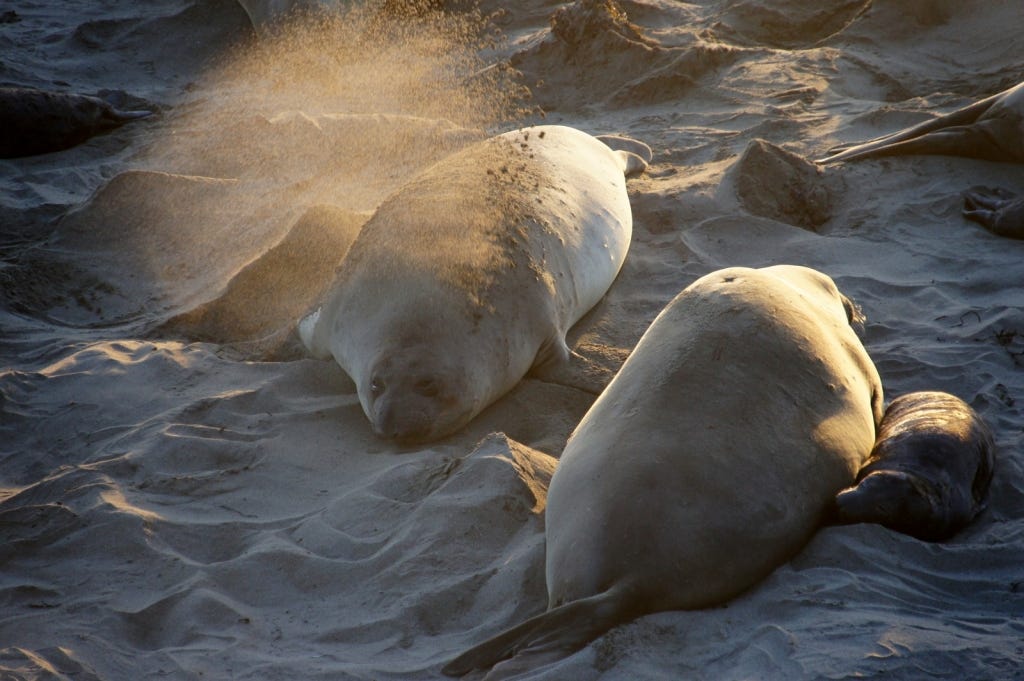
All the seals were constantly flipping sand onto their backs. Perhaps to keep the sun off?
From a cliff vantage above the beach a respectful distance away, we were watching seals at sunset at Piedras Blancas Beach. This is popular spot near Hearst Castle, that huge monstrosity put up by the newspaper magnate a century ago.
The seals started coming to this rookery only in 1990, with the first pup born in 1992. In 2013, 5,000 pups were born from a colony of 20,000 seals! We were greeted with hundreds of seals piled en masse on the beach, black-coated babies, some still slick with blood from birth, contrasted with the light brown color of the adults.
The babies trumpet their needs to their moms, who roar back and forth with their offspring. Rather than smell or sight, babies connect to their mothers by vocalizing, so this calling is the way they bond and find one another amidst a sea of other seals.
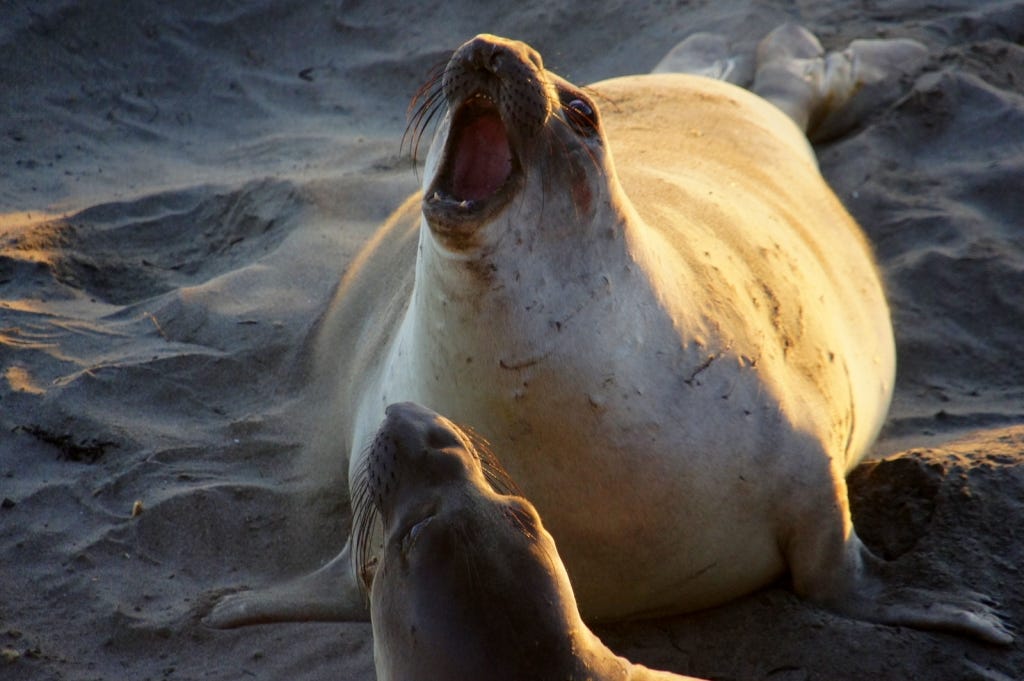
Two mother seals discuss beach rights.
And where is dad? Why, roaming the beach throwing his chest in the air and roaring at the other males, of course. (“Back DOWN, Homeslice,” is how it translates according to the most current research.) With their big noses hoisted in the air, the bull seals have one thing in mind: dominance of the beach hierarchy. They assert their power through loud bellowing and by bashing together their chests, along with some biting, though their wounds rarely are fatal. The prize? Out of the six miles of beach rookery, there will emerge about 100 alpha males that each rule their little beach cove and will mate with their harem of blubbery beauties.

Two males roar at one another. The one on the left backed down.
They might start out sheathed in thick layers of fat, but one crazy part of this scene is the fact that the elephant seal mothers remain on the beach for around three months without food or water during the birthing and mating cycle. No room service or Meal Trains in the wild.
From just before giving birth sometime in January all the way through the mating season, they are living off their blubber, and lose half their body weight, 2000 pounds. (Richard Simmons' weight loss boot camps are like a KFC buffet compared to that.) For the first month after birth, they are cranking out milk for their new pups, which start at 70 pounds and grows to 300 pounds by the time they are weaned. Milk fat content rises to almost 50%, compared to human or cows at around 4%, which helps the pups put on the necessary layers of blubber to survive in the cold water of the Pacific.
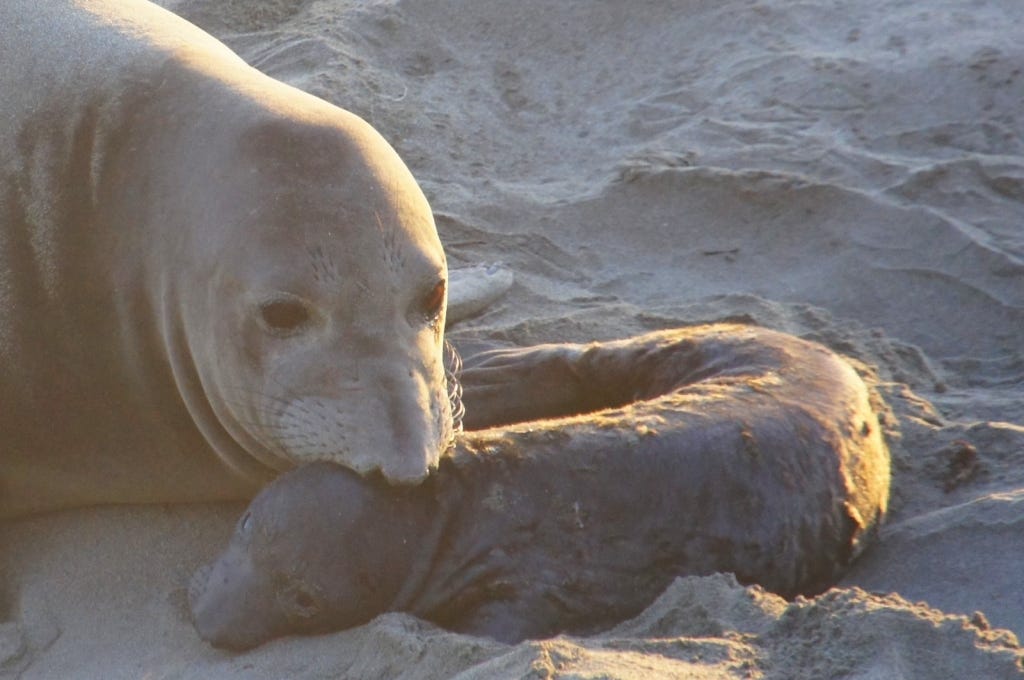
A mother elephant seal nuzzles her baby.

A mama seal napping away, resting up to feed her offspring.
And then, after four weeks, the moms abruptly wean their babies. Some of the pups are called “super-weaners” (curb the giggles please) because they nursed on multiple moms, and can be another couple hundred pounds heavier than their more-faithful cousins. Either way, the seals enter the water within about a month of birth and spend 8-10 weeks building muscle and oxygen capacity before they hit the road north to find food near Alaska, not returning to land until the fall breeding season six months later. The cycle begins anew.

A mother seal reclines right before she feeds her baby.
The ability of animals to survive in nature continues to astound me. This has hit home many times during this trip, whether watching a baby sea otter learn to crack mollusks to by hammering them on a rock or ducks bobbing up and down in the ocean waves diving for food.
I find it hard to believe any of the seals make it given the odds stacked against them, yet they continue to return to this spot generation after generation. Reading about them and watching the red glow of evening light over their rookery was yet another special moment in nature on this trip and a great conclusion to our time in Big Sur.
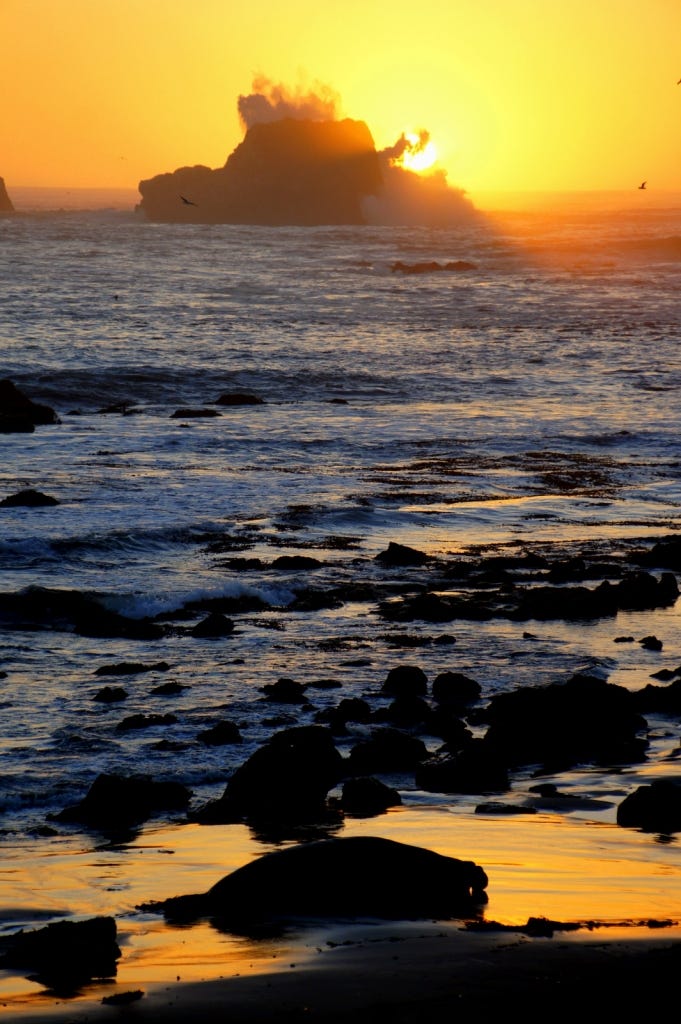
Ocean spray on a rock while the sun sets over the beach, elephant seal bull reclining in the foreground.

